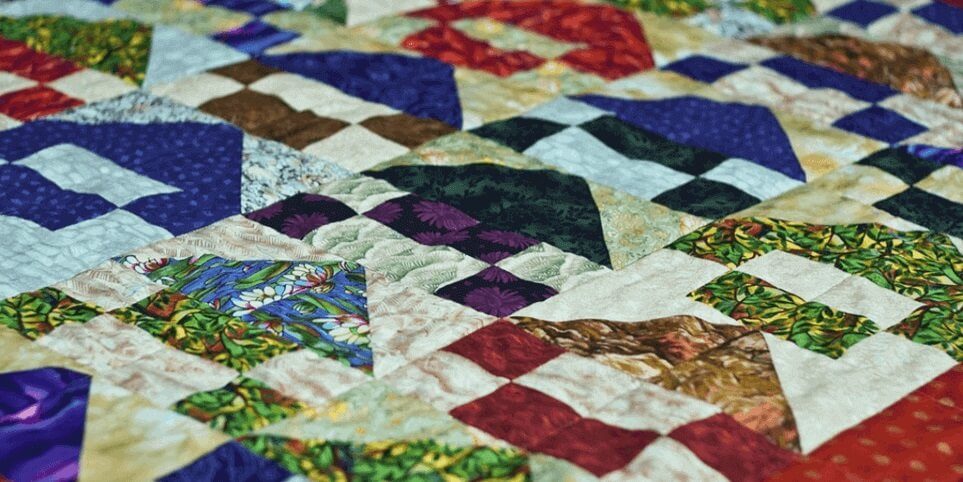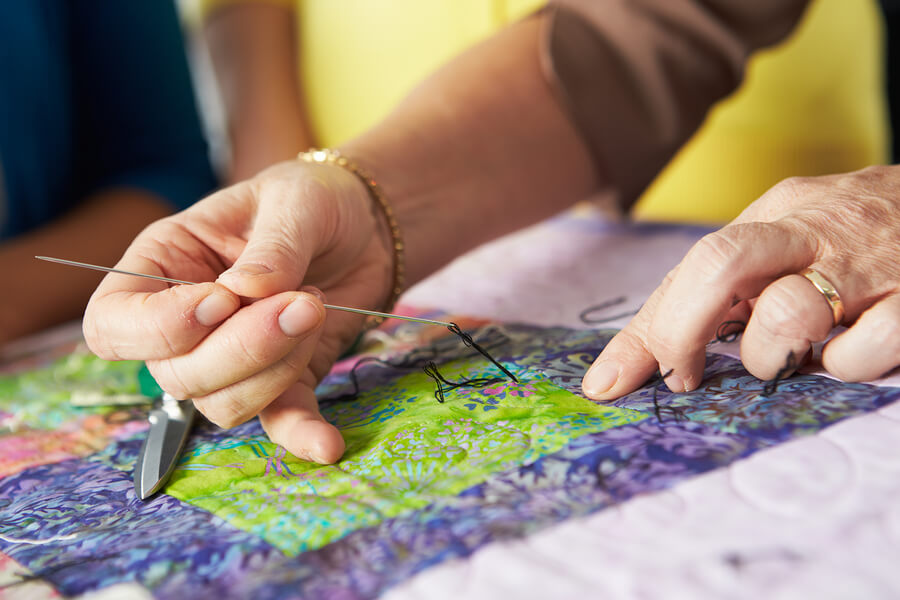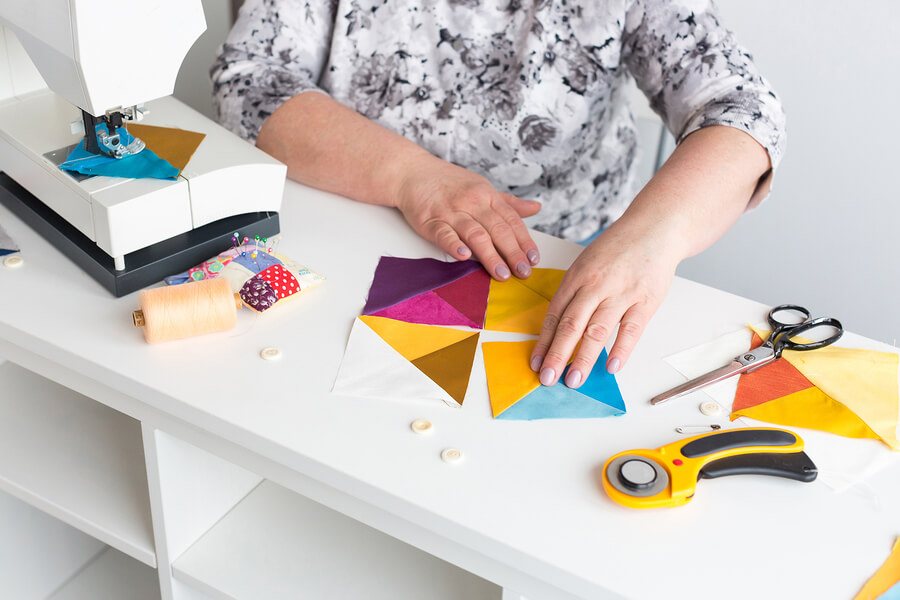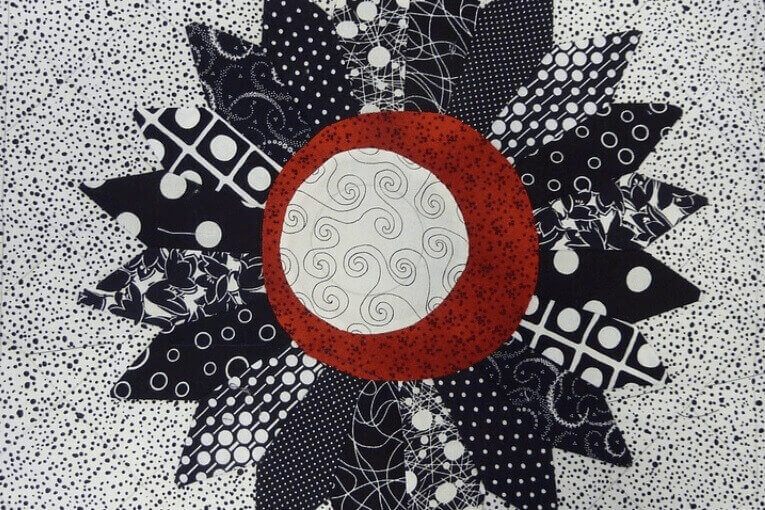What is the Difference between Hand Quilting and Machine Quilting?

Most quilts begin as quilt tops which may be in any of hundreds of designs. Quilts may be pieced, embroidered, appliqued, or any combination of these methods. Once the quilt top is put together, it is matched to the middle and the backing of a compatible size. Now, all that is left to decide is how the quilting will be done; by hand, or by machine but first you will need to know the difference between hand quilting and machine quilting.
“Quilting” refers to the stitching process used to sew these three layers together. Although most quilters have a favorite way of stitching quilts, many use a combination of both processes for different types and sizes of quilts.
Hand Quilting

Quilting by hand is a centuries-old process that can be seen in any heirloom or vintage quilt. Many quilters prefer sewing by hand as much for the enjoyment and satisfaction of the project as the appearance. A quilt that has been stitched by hand is typically a source of pride for the crafter. As for the difference in appearance, these quilts usually have a looser appearance to the fabric than those quilted by machine.
If you are going to be doing a lot of hand quilting, invest in a floor frame or standing hoop that will help prevent errors by keeping more of the quilt held tight at one time.
Many quilters who prefer hand quilting feel relaxed by the process. Some quilters compare hand quilting to therapy and find that it is highly calming. If you have the time to put into quilting by hand and enjoy the process more than getting to the final product, this might be the best choice for you.
Machine Quilting
There are many sewing machines today that include quilting stitches, in addition to specialty quilting machines which are made with a long arm to accommodate a large quilt. Most people lack the money and space it takes to invest in the latter but today’s advanced home sewing machines include a variety of features that make quilting by machine easy while producing a professional-looking final product.

Some machines also combine embroidery with quilting features for even more diversity in the types and designs of quilts and other artwork you can create. Quilting on a machine leaves the pieces more tightly sewn and gives them a crisper appearance.
Machine quilting is not without its challenges, especially if you take on too large of a project before you have mastered the techniques. Many quilters use fusible batting to hold the layers in place and to make the fabric stiffer so that it is easier to handle without the need for a lot of pins. Although machine quilting is the recommended method for larger quilts, keep in mind that they will have to be maneuvered in the space between the needle and the body of the machine. Start small and leave room to make some mistakes to master your craft before you end up with a major do-over.
How to Decide
Size
Although you might want to hand quilt a baby quilt or twin sized quilt to create an heirloom, larger quilts that are made to fit queen or king sized beds will obviously take a lot more time and work. Unless you want to make a single quilt into a long-term project, quilting on the machine is going to be your best option for anything large. This is especially true for inexperienced quilters who tend to take a little more time.
Fabric
Some fabrics are easier to handle than others, making it more or less difficult to stitch by hand. Fabrics that are thick or stiff are difficult to push the needle through and they can be hard on the quilter’s hands. Others, such as satin, silk, or sateen are slippery and difficult to hold on to.
Use

Quilts are made for everyday use, competitions, and everything in-between. For those that are used and laundered regularly, machine quilting is the better approach. Although hand stitching gives you more room to express your creativity and give it a more authentic appearance, machine quilting is actually stronger and often the choice for functional quilts.
Many quilters claim that they can’t tell the difference between hand and machine stitched quilts but those used in shows or competitions may have to abide by guidelines, usually requiring them to be stitched by hand. Although the overall appearance of the quilt may be the same or similar, a close examination is going to make it obvious to any other quilter what types of stitches were used.
Once you have tried both methods, you will probably find that you favor one over the other. If you are like many quilters who enjoy a diversity of projects, you will likely use both methods to get the best results for each. Either quilting method can be satisfying to the crafter who enjoys the art of quilting and the comfort and beauty of homemade quilts.

